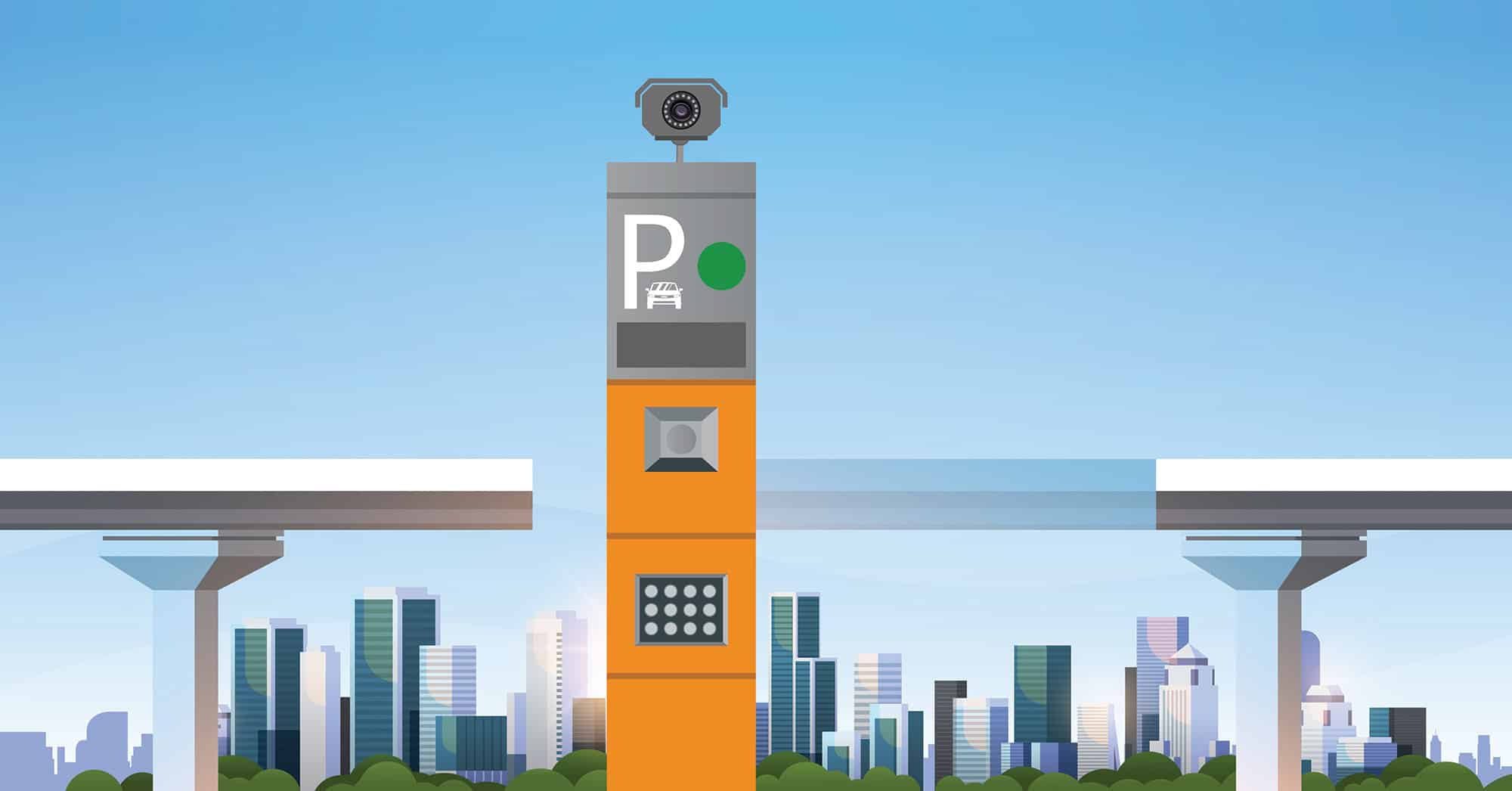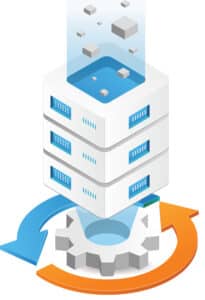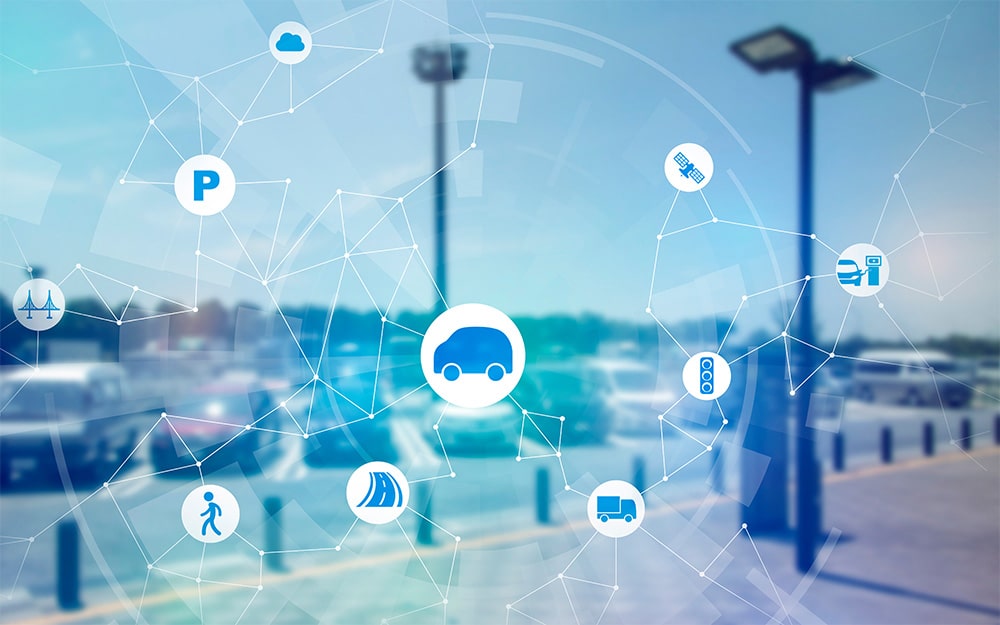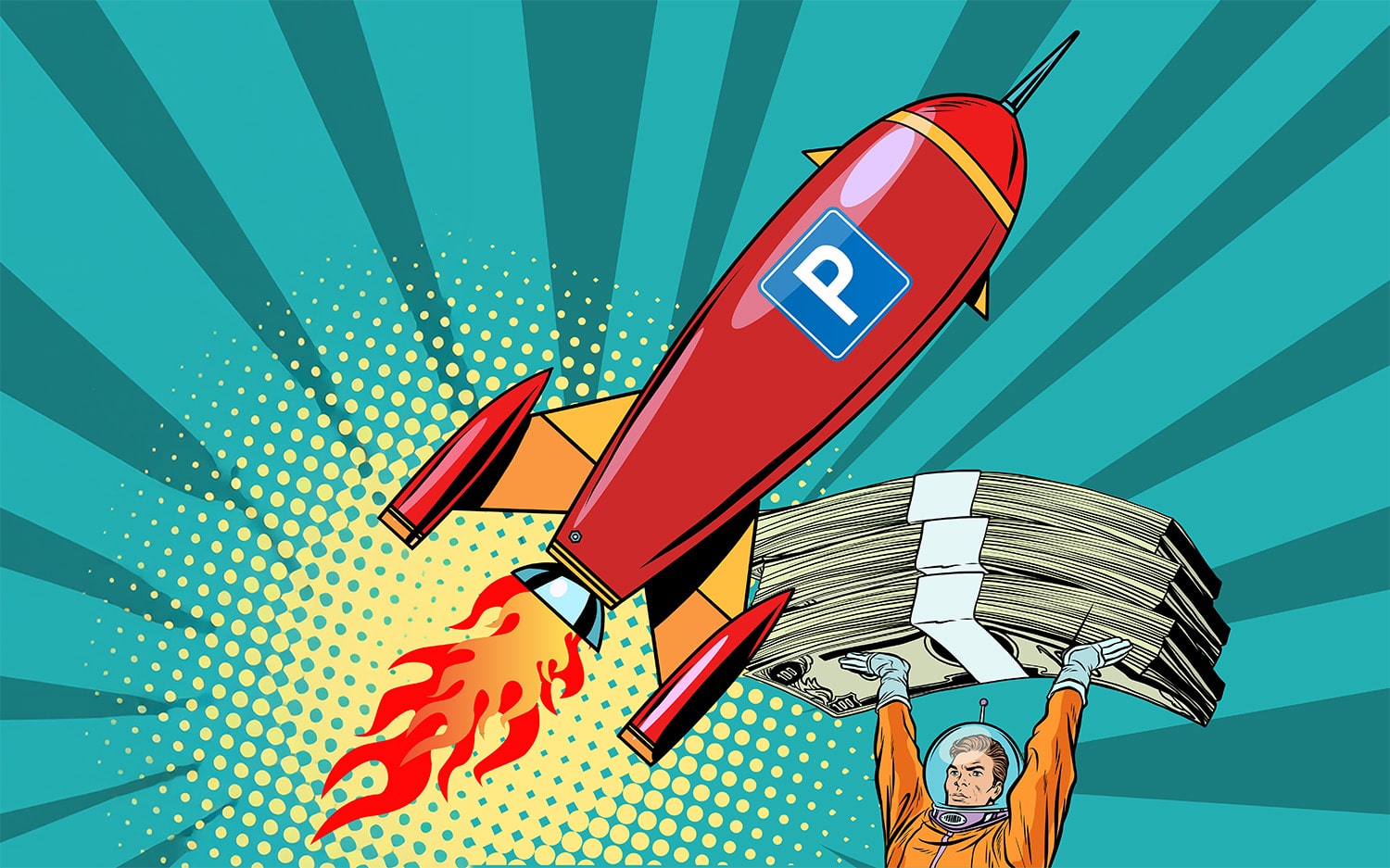
Bridging the Generation Gap
Technology’s Transformative Role in Shaping the Parking Workforce
Share:
Share:
shutterstock / Golden Sikorka / syafak/ Macrovector/
The parking industry is ripe with innovation, and new technologies are entering the marketplace faster than infrastructure is being built that enables them to communicate.
Forward-thinking operators are enhancing their tech stacks by the day with the aim of creating operational efficiency and surfacing data insights that will allow them to better focus on their core business (parking cars)—but fragmentation remains a roadblock.
Today our industry is in a position where leaders across all markets and sectors agree that we need to build a solution. We share a vision, we recognize the need, and we’ve rolled up our sleeves. We agree that data is not worth it’s salt unless you can act on it – and that defragmentation is the answer.
By building flexible architecture that allows different systems to interoperate, we can begin to break down barriers that are holding us back from the open exchange of data and the ultimate frictionless customer experience.
There are myriad technologies on the market. Parking is a highly competitive landscape. When a parking manager uses a “build, partner, or buy” framework to assemble their tech stack, the likelihood of it being a carbon copy of the one assembled by the parking manager next door is slim to none.
This ecosystem of disconnected technologies causes friction for everybody:
Customers having to manage credentials and payment methods for multiple apps is certainly inconvenient (and not uncommon for parkers in cities where multiple operators are present). But the worst friction occurs when those apps aren’t talking to the technologies nestled at the inflection points that define the customer experience (ex. redemption, entry/exit, occupancy indication, wayfinding).
Consolidation isn’t the solution being proposed here—in fact, quite the opposite. The flora and fauna of the parking technology ecosystem must continue to thrive in a hothouse of innovation. That innovation is what makes the need for integration and universal data standards set by the Alliance for Parking Data Standards (APDS) and other regulatory organizations even more urgent.

Basically: knowledge is power; ergo, more information is better.
But data alone is not information. Many parking systems include silos of technology and therefore silos of data. As standalone silos, this data has diminished value. Until it is viewed as one set, it cannot be considered viable information.
This is demonstrated by the various ways that customers can access and pay for parking at the curb. Mobile apps and parking meters control most curbside parking transactions with many municipalities leveraging several of each.
Each of these technologies includes its own reporting and administrative platform. The more technologies that are added to the municipality’s ecosystem, the more platforms there are to manage.
So, what happens?
There are more places to log in. More credentials to manage. More permissions to set up and more read/write access to grant. More people who need different info in various capacities at specific times. More places to make changes when changes need to be made. More places to pull reports from and more data to manually consolidate.
And if you’re a technology vendor trying to convince your operator prospects your solution isn’t going to pile on more work… well… you better think about your product and positioning in terms of adding unique value without adding complexity. Because as the appeal of and demand for digital mobility solutions increases, so does the stress inflicted by defragmentation.
Defragmentation can be a catalyst for a more efficient and equitable environment. It’s too often that parking data is viewed as a benefit for administrators and operators and not as something that provides value to the public.
Thinking about curbside activity:
Extending these benefits to operators:
And to equipment and software providers:
It’s critical to recognize that defragmentation and data-sharing require developing the mechanisms to do so. This uses valuable resources that could be earmarked for other initiatives. Looking through this lens, one easily sees how this could be perceived as a cost that outweighs whatever benefit.
This is even more reason for technology companies to form strategic alliances and build solutions that can be integrated into a parking system without increasing complexity.
Another limiting factor of defragmentation efforts is taking a “one-size-fits-all” approach. There isn’t a world where every curb or facility has an identical configuration of technologies—nor should there be. Thinking about the catch-all “best” tech and focusing solely on forming integrations between those is counterproductive and limiting.
The lack of data standardization is a colossal issue as well. Organizations like APDS and the Open Mobility Foundation-Curb Data Standards (OMF-CDS) are imposing much-needed rigor in how we refer to and exchange data.
We also need to be thinking ten steps ahead and asking questions like, “What’s coming after smartphones?” The smartphone is so deeply ingrained in today’s parking systems and experiences. But ultimately the future may look like having your electric autonomous vehicle know exactly where to drive and park based on the real-time data it consumes from various systems for parking reservations and guidance.
What will those integrations look like? And how do we create an environment for them?
There are a few philosophical ideas that inform successful defragmentation efforts in the parking industry. Let’s take a look:
Systems thinking emphasizes the interconnectedness of different parts of a system. This means thinking about parking as part of a broader transportation system and developing an understanding of how parking interacts with other modes of transportation: public transit, walking, biking, and micro-mobility, among others.
Customer-centricity is a methodology that highlights the needs and experiences of the customer and focuses on solving customer pain. It brings a crucial element into developing technology: empathy. Viewing parking through the lens of the driver is imperative because understanding their frustrations and pain points is how we build parking solutions that are intuitive, user-friendly, and stress-free.
All of us are working towards a more sustainable future. Every year, we’re seeing more and more cities implement sustainable future planning that emphasizes the long-term health and well-being of the environment and society. We can quite literally deliver the blueprint—or “greenprint”, if you will—that communities are looking for by prioritizing the use of sustainable materials, energy-efficient technologies, and green infrastructure.
Future-forward cities like Colorado Springs, Colorado, are investing in their city’s mobility future through the digitization of their infrastructure, curbsides, and off-street parking assets.
Unifying all these technologies and their important data (like payments, occupancy tracking, permitting systems, enforcement, and LPR) into a single unified interface improves traffic flow, reduces congestion, and optimizes the efficiency and yield of existing parking assets.
Everybody benefits!
Like all approaches formulated to tackle deeply ingrained problems, talking about defragmentation is much easier than executing it. But it can be broken down into digestible and executable elements:
Think big before you hone in. You may have a specific use case right in front of your face, but it’s critical to consider the impact of establishing an integration in the larger context of your other technologies and customer touchpoints.
Sit down with your team and collect information on all aspects of how the system works before deciding which route to take. These conversations shouldn’t just consider past and current data sets… it’s not a historical process. Look back and look forward and set yourself up for success in the long term.
We all know that integrating datasets is a highly technical process that creates an environment where more efficient reporting and data analysis can occur. But what this process doesn’t reference is all the other processes that need to occur so that this merged data can work together.
Take, for instance, a scope of work that includes the reporting of transactional data on a block-face basis. Are the current datasets structured this way? What if Vendor A reports on a space basis while Vendor B reports on a zone basis?
On the surface, these datasets do not match. Adjustments or mapping must be done to correct this. A successful scope will include an initial analysis of what this data looks like and which modifications or mapping must occur to make it work.
Implementation requires planning and establishing the near-term and long-term objectives for your parking system. These objectives may range from introducing multiple mobile payment options to positioning the system to accommodate autonomous vehicles.
While these examples vary in terms of complexity, both will be advanced by processes that organize data and information.
The former (introducing mobile payment methods) requires data-sharing to make the administration of these applications more efficient.
For example, you can use integrations to surface essential reservation data to customer service reps in real-time so they can more efficiently solve friction for customers who hit the call button with issues related to third-party reservations.
The latter (accommodating autonomous vehicles) is heavily reliant on information, as scenarios like autonomous TNCs will require data to function properly.
Can an autonomous transportation network company (TNC) double-park to conduct passenger pick-up/drop-off (PUDO)? Likely not. These technologies will need data from all parts of the parking system to navigate safe and approved parking locations.
After defining your goals in the context of the larger parking system, you can determine which “building blocks” you need and how to procure and manage them. The building blocks may include in-house talent, tools, software, equipment, or marketing budget.
Recognize that your end goals may be moving targets; that’s normal. Keeping one eye on the future allows you to make short-term decisions about budget and resourcing with the end goals still in sight.
Parking managers must make decisions about how best to organize and store the data. No easy feat but much simpler to accomplish with the right information and infrastructure in place.
Start asking questions like:
Regardless of whether you build, buy, or partner, adhering to data-sharing standards like the APDS and the OMF-CDS will standardize the process of transmitting data to and from external sources.
Prudent vendor selection and favorable contractual terms are key elements for success. Data integrations can be costly and time-consuming to build and maintain, and your organization may not want to shoulder that complexity.
Technology companies and other vendors that develop solutions with defragmentation and connectivity in mind should be prioritized, as those efforts future-proof them as partners and ensure flexibility on both ends.
You can also add contractual terms to ensure that this occurs. Of course, the TNCs must follow a properly communicated scope of work so that all parties are aware of the objectives and developments involved.
Implementations are seldom (really, never) perfect. Defragmentation projects include multiple stress points that rely on collaboration to successfully move past. The more fragmented the system, the more stress points we’ll encounter.
Defragmentation is a work in progress and will remain so as long as new technologies continue to enter the market.
What we can do to prepare for and preempt these challenges is:
Einstein’s classic statement, “Insanity is doing the same thing over and over and expecting different results” certainly applies here!
Ongoing iteration, learning from the past, and doing our due diligence when vetting vendors will ensure we’re alchemizing past challenges with defragmentation into future successes. ◆
Christopher Perry is CRO at Umojo and a member of the IPMI Technology Committee.
Sarah Becherer is VP of Growth at Ocra and a member of the IPMI Technology Committee.
Michelle McDonald is former Chief of Staff and Business Development Lead at Modii and a member of the IPMI Technology Committee.

Technology’s Transformative Role in Shaping the Parking Workforce

Why Parking Operators Should Remain Technology Agnostic

The Role of Investment in Parking’s Future
Parking & Mobility is IPMI’s flagship publication, covering the news, trends, analysis, technologies, and people of the parking and mobility industry, and how it affects and influences communities around the world.
| Cookie | Duration | Description |
|---|---|---|
| cookielawinfo-checkbox-advertisement | 1 year | Set by the GDPR Cookie Consent plugin, this cookie is used to record the user consent for the cookies in the "Advertisement" category . |
| cookielawinfo-checkbox-analytics | 11 months | This cookie is set by GDPR Cookie Consent plugin. The cookie is used to store the user consent for the cookies in the category "Analytics". |
| cookielawinfo-checkbox-functional | 11 months | The cookie is set by GDPR cookie consent to record the user consent for the cookies in the category "Functional". |
| cookielawinfo-checkbox-necessary | 11 months | This cookie is set by GDPR Cookie Consent plugin. The cookies is used to store the user consent for the cookies in the category "Necessary". |
| cookielawinfo-checkbox-others | 11 months | This cookie is set by GDPR Cookie Consent plugin. The cookie is used to store the user consent for the cookies in the category "Other. |
| cookielawinfo-checkbox-performance | 11 months | This cookie is set by GDPR Cookie Consent plugin. The cookie is used to store the user consent for the cookies in the category "Performance". |
| CookieLawInfoConsent | 1 year | Records the default button state of the corresponding category & the status of CCPA. It works only in coordination with the primary cookie. |
| elementor | never | This cookie is used by the website's WordPress theme. It allows the website owner to implement or change the website's content in real-time. |
| viewed_cookie_policy | 11 months | The cookie is set by the GDPR Cookie Consent plugin and is used to store whether or not user has consented to the use of cookies. It does not store any personal data. |
| Cookie | Duration | Description |
|---|---|---|
| _ga | 2 years | The _ga cookie, installed by Google Analytics, calculates visitor, session and campaign data and also keeps track of site usage for the site's analytics report. The cookie stores information anonymously and assigns a randomly generated number to recognize unique visitors. |
| _ga_02PMHW8YWC | 2 years | This cookie is installed by Google Analytics. |
| _ga_LC0QJJHM3J | 2 years | This cookie is installed by Google Analytics. |
| _ga_V9KYTSBYT2 | 2 years | This cookie is installed by Google Analytics. |
| iutk | 5 months 27 days | This cookie is used by Issuu analytic system to gather information regarding visitor activity on Issuu products. |
| Cookie | Duration | Description |
|---|---|---|
| mc | 1 year 1 month | Quantserve sets the mc cookie to anonymously track user behaviour on the website. |
| Cookie | Duration | Description |
|---|---|---|
| ultp_view_1052 | 1 day | No description |
| ultp_view_1058 | 1 day | No description |
| ultp_view_1060 | 1 day | No description |
| ultp_view_1064 | 1 day | No description |
| ultp_view_1068 | 1 day | No description |
| ultp_view_1070 | 1 day | No description |
| ultp_view_1072 | 1 day | No description |
| ultp_view_1078 | 1 day | No description |
| ultp_view_1082 | 1 day | No description |
| ultp_view_1088 | 1 day | No description |
| ultp_view_1100 | 1 day | No description |
| ultp_view_1103 | 1 day | No description |
| ultp_view_1114 | 1 day | No description |
| ultp_view_1118 | 1 day | No description |
| ultp_view_1122 | 1 day | No description |
| ultp_view_1125 | 1 day | No description |
| ultp_view_1130 | 1 day | No description |
| ultp_view_1132 | 1 day | No description |
| ultp_view_1135 | 1 day | No description |
| ultp_view_1541 | 1 day | No description |
| ultp_view_1554 | 1 day | No description |
| ultp_view_1557 | 1 day | No description |
| ultp_view_1560 | 1 day | No description |
| ultp_view_1563 | 1 day | No description |
| ultp_view_1568 | 1 day | No description |
| ultp_view_1572 | 1 day | No description |
| ultp_view_1576 | 1 day | No description |
| ultp_view_1580 | 1 day | No description |
| ultp_view_2305 | 1 day | No description |
| ultp_view_2321 | 1 day | No description |
| ultp_view_2338 | 1 day | No description |
| ultp_view_2342 | 1 day | No description |
| ultp_view_259 | 1 day | No description |
| ultp_view_270 | 1 day | No description |
| ultp_view_275 | 1 day | No description |
| ultp_view_286 | 1 day | No description |
| ultp_view_3074 | 1 day | No description |
| ultp_view_3115 | 1 day | No description |
| ultp_view_3334 | 1 day | No description |
| ultp_view_3336 | 1 day | No description |
| ultp_view_3338 | 1 day | No description |
| ultp_view_3340 | 1 day | No description |
| ultp_view_3346 | 1 day | No description |
| ultp_view_3354 | 1 day | No description |
| ultp_view_3361 | 1 day | No description |
| ultp_view_3367 | 1 day | No description |
| ultp_view_365 | 1 day | No description |
| ultp_view_367 | 1 day | No description |
| ultp_view_38 | 1 day | No description |
| ultp_view_3846 | 1 day | No description |